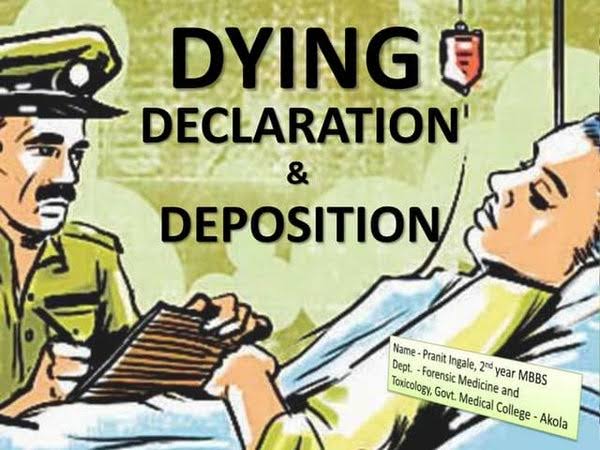Sunil Ambwani and Dilip Gupta, JJ.@mdashThe Oriental Insurance Company Ltd. has filed this appeal through Shri Suresh Panjwani, Advocate challenging an award dated 20.4.1999 of the Motor Accident Claims Tribunal, Faizabad in Claim Petition No. 47 of 1994, Achchelal and Anr. v. Shatrughan Singh and Ors., awarding compensation of Rs. 1,20,000 to the unfortunate father and mother for having lost their 7 year old son, crushed by Ambassador Car No. DBD 9119 insured by the appellant.
2. Shri Nand Lai Maurya, P.W. 1, the eye-witness, who was sitting outside his house on a cot close to the place of accident had witnessed the accident on 11.2.1994 at 11.30 p.m. ; P.W. 2, Ram Ujagar, a chance witness, walking near the side of the road for getting a hair cut, deposed that he had heard some noise, and reached the spot at 11.30 p.m. He found the deceased child Sunil lying in a crushed state on the western pavement of the street. The P.W. 3 Daya Ram also deposed that he was sitting with Nand Lai outside his house, when he saw the accident.
3. D.W. 1 Heera Prasad, the driver of the Ambassador car stated that, when he was about 10-15 mtrs. from the incident driving at a speed of 10-20 km. per hour, he saw that a child was being punished and beaten by a stick by his mother. The child suddenly rushed towards the street and came in front of the car. There were people on both the sides of the road and that the car was positioned between the two speed breakers.
4. The Tribunal did not believe the statement of the driver on the reasoning that if the car was at such a slow speed, the driver could have stopped it on seeing the child rushing across the street. The Tribunal held that the accident was caused due to the negligence of the car driver.
5. The insurance company defended the claim on the ground that driver of the vehicle was not having a valid licence. Shri Rajesh Kumar, D.W. 2, a surveyor reported that the driving licence was issued on 27.4.1984 and was valid upto 23.7.1987. It was renewed thereafter on 2.9.1988 to 1.9.1991 and again from 3.9.1995 to 2.2.1998. The accident happened on 11.2.1994 and thus on the date of accident the driver was not having a valid licence. The Tribunal held that the renewal of the licence relates back to the date of its expiry, and makes the licence valid for the period, when it was not in force and thus the insurance company is liable to indemnify the owner of the vehicle.
6. On the quantum of the compensation, the Tribunal relied upon the judgment in
7. Learned Counsel for the insurance company would submit that renewal of licence does not validate the licence for period in between when the licence was not renewed, and thus the insurance company cannot be made liable to pay the amount of compensation.
8. In
9. It was further held that an accident may take place for variety of reasons. The driver of vehicle may not in a given case be responsible for the accident. He may not be found to be negligent in a given case. The other factors such as unforeseen situation, negligence of. the victim, bad road, mechanical failure of the vehicle or any action or inaction of any other person may also lead to an accident. There may also be a case, where accident takes place without any fault on the part of the driver. In such case the question whether a driver was holding a valid licence or not, will not be relevant. Where licence was held but its validity expired and is subsequently renewed, it was held that the person would be duly licensed. If he applied within 30 days the licence would be renewed with effect from the date of expiry without any tests. Section 15 does not empower to reject the application for renewal on the ground of break in validity. He can obtain renewal and thus he cannot be said to be delicensed.
10. The owner of a motor vehicle has the responsibility to ensure that no vehicle is driven except by a person, who satisfies the provisions of Section 3 of the Act. Where the driver of the vehicle does not hold licence and was allowed to drive the vehicle consciously by the owner, the insurer is entitled to succeed in the defence and avoid the liability. The matter, however, may be different, where a dispute may arise as to whether the driver had a valid licence, or where the owner of the vehicle committed breach of the terms of the contract of insurance as well as the provisions of the Act, by consciously allowing any person to drive a vehicle, who did not have valid driving licence.
11. In
15. Renewal of driving licences.--(1) Any licensing authority may, on application made to it, renew a driving licence issued under the provisions of this Act with effect from the date of its expiry:
Provided that in any case where the application for the renewal of a licence is made more than thirty days after the date of its expiry, the driving licence shall be renewed with effect from the date of its renewal:
Provided further that where the application is for the renewal of a licence to drive a transport vehicle or where in any other case the applicant has attained the age of forty years, the same shall be accompanied by a medical certificate in the same form and in the same manner as is referred to in Sub-section (3) of Section 8, and the provisions of Sub-section (4) of Section 8 shall, so far as may be, apply in relation to every such case as they apply in relation to a learner''s licence.
(2) An application for the renewal of a driving licence shall be made in such form and accompanied by such documents as may be prescribed by the Central Government.
(3) Where an application for the renewal of a driving licence is made previous to, or not more than thirty days after the date of its expiry, the fee payable for such renewal shall be such as may be prescribed by the Central Government in this behalf.
(4) Where an application for the renewal of a driving licence is made more than thirty days after the date of its expiry, the fee payable for such renewal shall be such amount as may be prescribed by the Central Government:
Provided that the fee referred to in Sub-section (3) may be accepted by the licensing authority in respect of an application for the renewal of a driving licence made under this Sub-section if it is satisfied that the applicant was prevented by good and sufficient cause from applying within the time specified in such Section (3):
Provided further that if the application is made more than five years after the driving licence has ceased to be effective, the licensing authority may refuse to renew the driving licence, unless the applicant undergoes and passes to its satisfaction the test of competence to drive referred to in Sub-section (3) of Section 9.
(5) Where the application for renewal has been rejected, the fee paid shall be refunded to such extent and in such manner as may be prescribed by the Central Government.
(6) Where the authority renewing the driving licence is not the authority which issued the driving licence it shall intimate the fact of renewal to the authority which issued the driving licence.
12. The Supreme Court thereafter considering the law laid down in Swaran Singh''s case dismissed the appeal from the order of the High Court by which the insurance company was made liable to pay, and made it open to the insurance company in view of the judgment in Oriental Insurance Company Ltd. v. Nanjappan and Ors. (2004) 13 SCC 224 : 2006 (1) ACCD 301 : 2004 (2) AWC 1839 (SC), to recover the amount from the insured. A liberty was given to initiate proceedings before the executing court, as if the dispute between the insurer and the owner was the subject-matter of determination. Before releasing the amount the insured owner of the vehicle was directed to be given a notice, and to be required to furnish security for the entire amount, which the insurer will pay to the claimants.
13. In Oriental Insurance Co. Ltd. v. Nanjappan and Ors. (2004) 13 SCC 224 : 2006 (1) ACCD 301 : 2004 (2) AWC 1839 (SC), the Supreme Court relying upon the New India Assurance Co. Ltd. v. Asha Rani (2003) 2 SCC 223 : 2003 (1) AWC 719 (SC), by which the judgment in
14. Shri Rajesh Kumar, the surveyor had deposed that the driving licence was valid upto 1.9.1991 and again from 3.9.1995 to 2.2.1998. On the date of accident, i.e., on 11.2.1994 the driver did not have a licence and that the renewal beyond 30 days will not take effect from the date of expiry of the licence. The vehicle was thus driven against the terms and conditions of the insurance policy. The insurance company, therefore, could not be held liable for payment of compensation. The principles of law developed by the Supreme Court in Oriental Insurance Company Ltd. v. Nanjappan and Ors. (supra) will thus be attracted, and that the insurance company would be liable to deposit the amount and to recover the same from the owner of the vehicle. The insurance company has deposited half of the amount in terms of the interim order passed by this Court on 12.7.1999. The interim order was modified on 19.11.1999 permitting the deposited amount to be disbursed in favour of the claimants/ respondent Nos. 1 and 2 against proper receipt, indemnification and on furnishing indemnity bond. The insurance company is directed to deposit the remaining amount also within a month and thereafter recover the same from the owner of the vehicle. The indemnity bond executed by the claimants for release of half of the amount in terms of the orders of the Court shall stand discharged.
15. The first appeal from order is accordingly partly allowed with the directions given as above.

